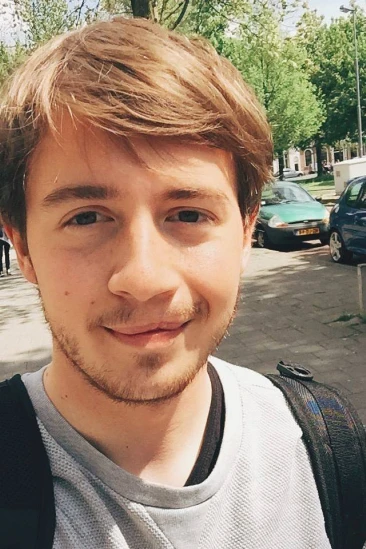What do you do?
I’m a Principal Experience Designer at Airbnb. I lead design for the Host Tools team. In practice, this involves a range of activities including creating roadmaps, sketching, planning user research, producing high-fidelity designs, and prototyping.
What led you into design?
I loved drawing houses and building with Legos from a very young age and for a long time I wanted to be an architect. At high school, I did some work experience in with an architect and with a graphic design agency. The architect was designing McMansions, and that didn’t excite me. At the design agency, I got to work on some really interesting branding projects and made up my mind to pursue a career in design.
Describe your working environment and hardware setup?
I have a sit-stand desk. A MacBookPro 15” and a 27” Dell screen. On my desk, I also keep a stack of 11”x17” paper for sketching. I sit amongst my team with a designer on my left, engineers to my right, a data scientist to the front, and a researcher behind.
What apps do you have in your dock?

What apps do you have on your iPhone?

What’s your design process?
It depends on the project, but the first step is usually about identifying the problem. Sometimes that is through research or data. Other times it will be a new business or technical opportunity, or feedback from our users. The next step is sketching some solutions, I try to move quickly into high fidelity designs. I will almost always make a quick prototype which we often use to get feedback from hosts. I’ll often repeat these steps numerous times until I find a solution that works.
What do you use to plan initial design concepts?
Pen and paper.
What pieces of work are you most proud of?
Airbnb listing page. I simplified and refreshed the design of the listing page on iOS and Android. It was a precursor to the current design that launched earlier this year.

Google Maps. I worked on the Material Design redesign of Google Maps. I did a lot of prototyping for the team and also designed the offline maps feature and the search along the route feature.

Where do you go to get inspired?
I climb up the hills of San Francisco. I sometimes bring a notebook to jot down ideas, sometimes I just look and think.
What apps do you use when designing?
Sketch, Sketch Mirror, Xcode, Google Docs, Redpen
How do you go about testing your design or gathering feedback?
For internal feedback, I use a tool called ‘Redpen’ to share my work and gather feedback from colleagues. Redpen was actually built by two designers who now work at Airbnb and it’s a key tool for the entire team. I also build a lot of early stage prototypes to test ideas internally and with our hosts. I took a CodePath class — iOS for Designers — earlier this year and since then have been making most of my prototypes in Swift. I work with a fantastic user researcher to show these prototype to our hosts and get detailed feedback. In the latter stages of a project, we invite hosts to beta test the product and we roll out changes slowly to get feedback and fix any issues that may emerge.
What music do you listen to when designing?
I can really only listen to music when I’m doing production type work. If I need to concentrate on a problem or write, I leave my headphone on but turn the music off. These are some of the albums I’ve been listening to recently:
What’s a great website for inspiration?
Not really a website, but Azeem Azhar’s email newsletter “The Exponential View” is a fascinating collection of articles on technology and society, delivered every Sunday.
How do you keep improving yourself as a designer?
Keep learning. I try to develop one substantial new skill every year. As I mentioned above, earlier this year I did the CodePath class — iOS for Designers where I learned to use Swift. It has really changed my process over the past few months.
Why did you join your company?
I was excited by the mission and already loved using the product. I also knew that were a lot of interesting problems to solve. On top of that when I interviewed I met some of the nicest and happiest people on earth!
What’s it like working at your company?







What design challenge do you face at your company?
Designing a marketplace means that we’re constantly balancing the needs of hosts and guests while trying to find optimal solutions.
How do you handle design disagreements at your company?
At every crit, the presenter starts out by stating the goal of the work and the type of feedback they are looking for. By agreeing on the goal and the problem we try to minimise disagreements about the design solutions themselves.
Is your company currently looking for designers?
Yes! http://panda.jobs/813/product-manager-development-infrastructure
Any tips on designers getting a job at your company?
Know why you want to work here. Show your passion and your process in your portfolio.
What product have you recently seen that made you think this is great design?
I went to see Kubo and the Two Strings for the second time last night. The animation is stunning. When I came home I watched a ‘making of’ documentary on Youtube. The attention to detail, the craft, the innovative use of technology are all incredible.
Do you have a cool design trick/hack/shortcut?
I’ve made my own Chrome extensions as prototypes in the past. This allows you to layer a new design on top of existing live data. It’s great if you need to test something with real data.
Any advice for ambitious designers?
Never stop learning.
Where can folks follow you?
Folks can follow me on Twitter.








